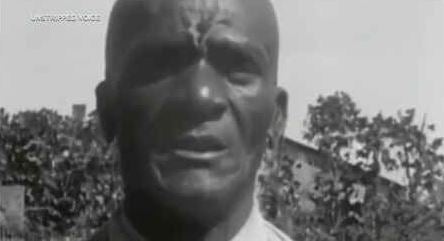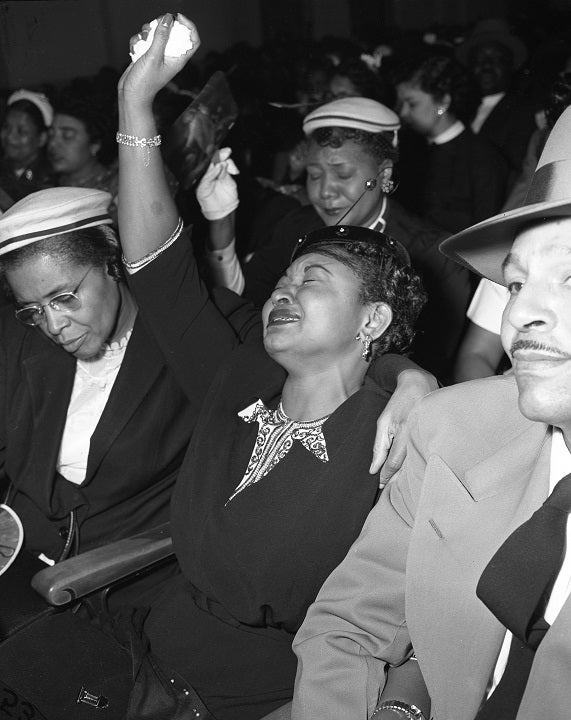Emmett Till’s cousin recalls finding Till’s body, and the picture that changed the world
Stories like Emmett Till’s are entrenched in American history. His death lit an important fire to the jolt of the American Civil Rights Movement.
Growing up, I learned details of Till’s life and death, and its impact, which most do not get to experience.
This week, you’ll get the “INside story” from Wheeler Parker Jr., Till’s cousin, and from Dan Wakefield, an Indianapolis native and award-winning writer and journalist. They painted a much-needed, vivid picture that still rings impactful nearly 70 years later.
Emmett Till had only been visiting Mississippi for a few days before the whistling incident at the store and his abduction happened.
Wheeler Parker Jr., Emmett’s cousin, was an eyewitness. He says that, in hindsight, he wonders what he could have done while up against such a dangerous situation.
“It is not a pleasant story. You feel so helpless. You always think about what you could have done, what you should have done,” Parker said. “Papa could have been gone, or they could have killed everyone in the house. You don’t know what kind of people you are dealing with. It is still not a pleasant story.”
The chaos of the days after Till’s abduction are still vivid for Parker.
“There were different things going on. Courtis went the landowners’ home to call back to Chicago. They got my Uncle Elbert to come over with his gun. He took me to Uncle William’s house. They called Chicago and got things going there,” Parker said. “My parents, once they got involved, they were very much pushing to get me out of there.”
The day after Emmett’s abduction Moses (Mose) Wright, Emmett’s great uncle and Parker’s grandfather, went to the sheriff in hopes of getting help in locating Emmett.
“They went to the proper authorities to pursue and do what needed to be done. They didn’t just sit around. They told us they would bring him back. They were waiting on that,” Parker said. “They took him that Sunday. They found his body Wednesday. Some young kid was fishing. Emmett would have never been found. As he went downstream, his body snagged and his foot was bouncing up and out of the water. [The kid] reported it and pulled him out.”
August 31, 1955
14-year-old Emmett Till was tortured, beaten, and shot to a point where he was almost unrecognizable.
Emmett’s decomposed body was pulled from the Tallahatchie River. Critics, and even some authorities, began to question if the body that was recovered was Emmett.
“The powers that be said, ‘This is not Emmett.’ They said we pulled an old white man up and were trying to embarrass the state of Mississippi. They said, ‘Emmett is in Detroit with his grandfather and you all know that,’” Parker said.
Mose Wright identified Emmett’s body. Wright said Emmett’s father’s ring that was found on the body was proof that the body was Emmett.

“My grandfather said he was in bad shape. They beat him horribly. He was swollen. They took him down there to the riverside. They took papa,” Parker said. “[The authorities] had a grave. They were having a funeral. They had the body there and they were going to put him in the ground.”
Parker said authorities had no intention on waiting for Emmett’s mother.
“They took the liberty to do what they wanted to do. That is what they had been doing all these years. Mayor Daley and others got involved. They stopped it and they had to release the body and they got it back to Chicago,” Parker said.
SEPTEMBER 2, 1955
Emmett’s mother, Mamie Till, received Emmett’s casket at Chicago’s Twelfth street train station, surrounded by family and photographers.
“That was the train station we came to for the Great Migration. That is where we landed,” Parker said.

Emmett’s body was then taken to A.A. Rayner and Sons Funeral Home.
Mamie Till made the historic decision to let the world see what happened to Emmett. She instructed Black press photojournalists to document and release images of Emmett’s tormented body.
“At first, she was very, very highly upset. Quite naturally. She just let it all hang out. ‘Let everybody see what I see.’ She couldn’t believe it. That was the decision she made, which was a good decision,” Parker said.
“They touched him up a little bit because his eye was hanging down and they put his eye back in its socket. For the most part, they didn’t do anything,” Parker said.

SEPTEMBER 3, 1955
Emmett’s body laid on display at Chicago’s Roberts Temple Church of God, where thousands waited for hours to see Emmett at his open-casket funeral.
“I went to the funeral numb. I was there, but, you know. I didn’t believe it was Emmett there,” Parker said. “Yea, because they normally fix people up you know? That’s how I dealt with it. There is a body there and somebody is in that casket but that ain’t Bobo. I was numb, you know. They took my picture at the funeral. I was oblivious to what was going on. It was a way of life. That was what happened — we were so helpless. That was a plight for us. it seemed like no way out…it seemed like no way out.”

SEPTEMBER 6,1955
Emmett Till was laid to rest at Burr Oak Cemetery.


